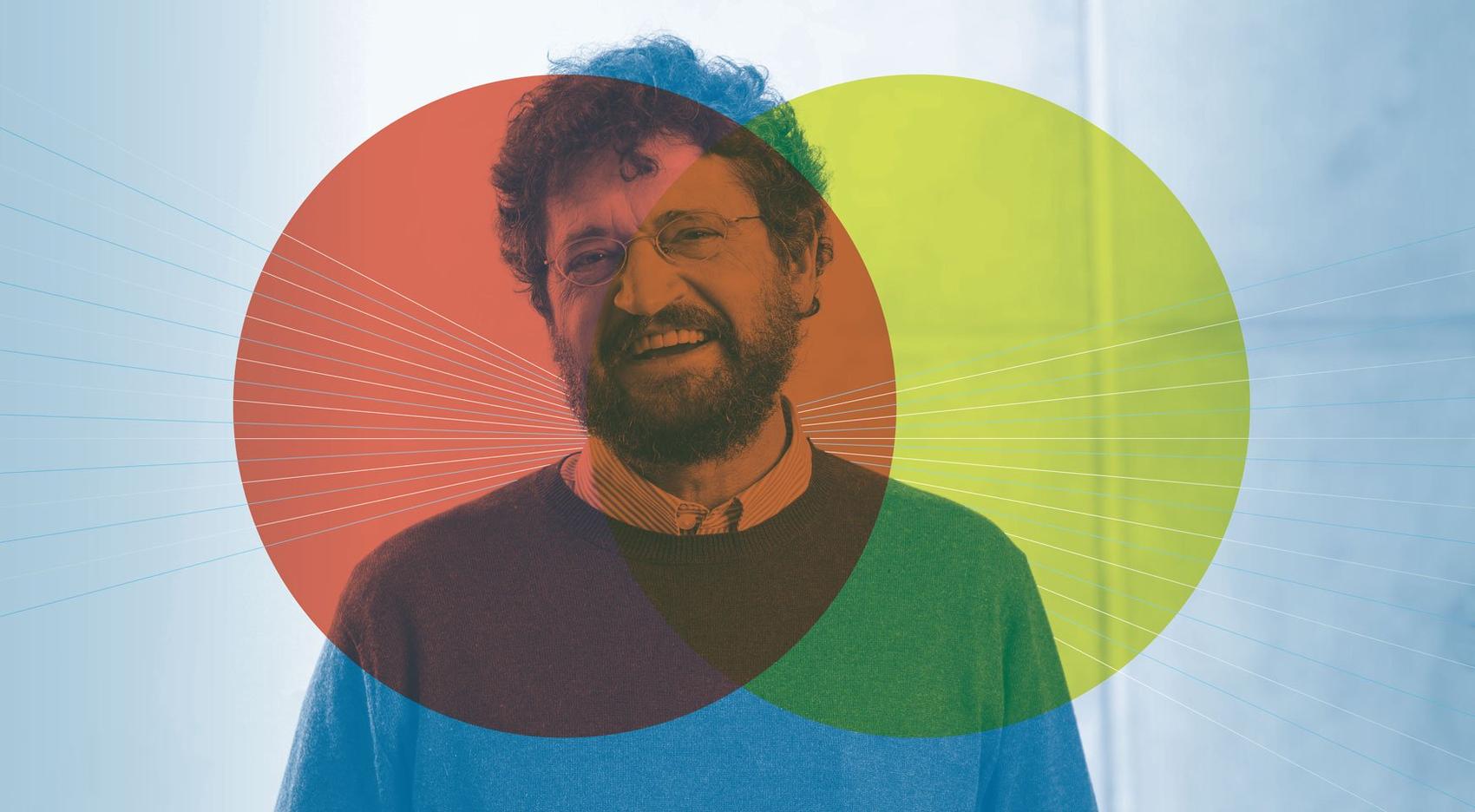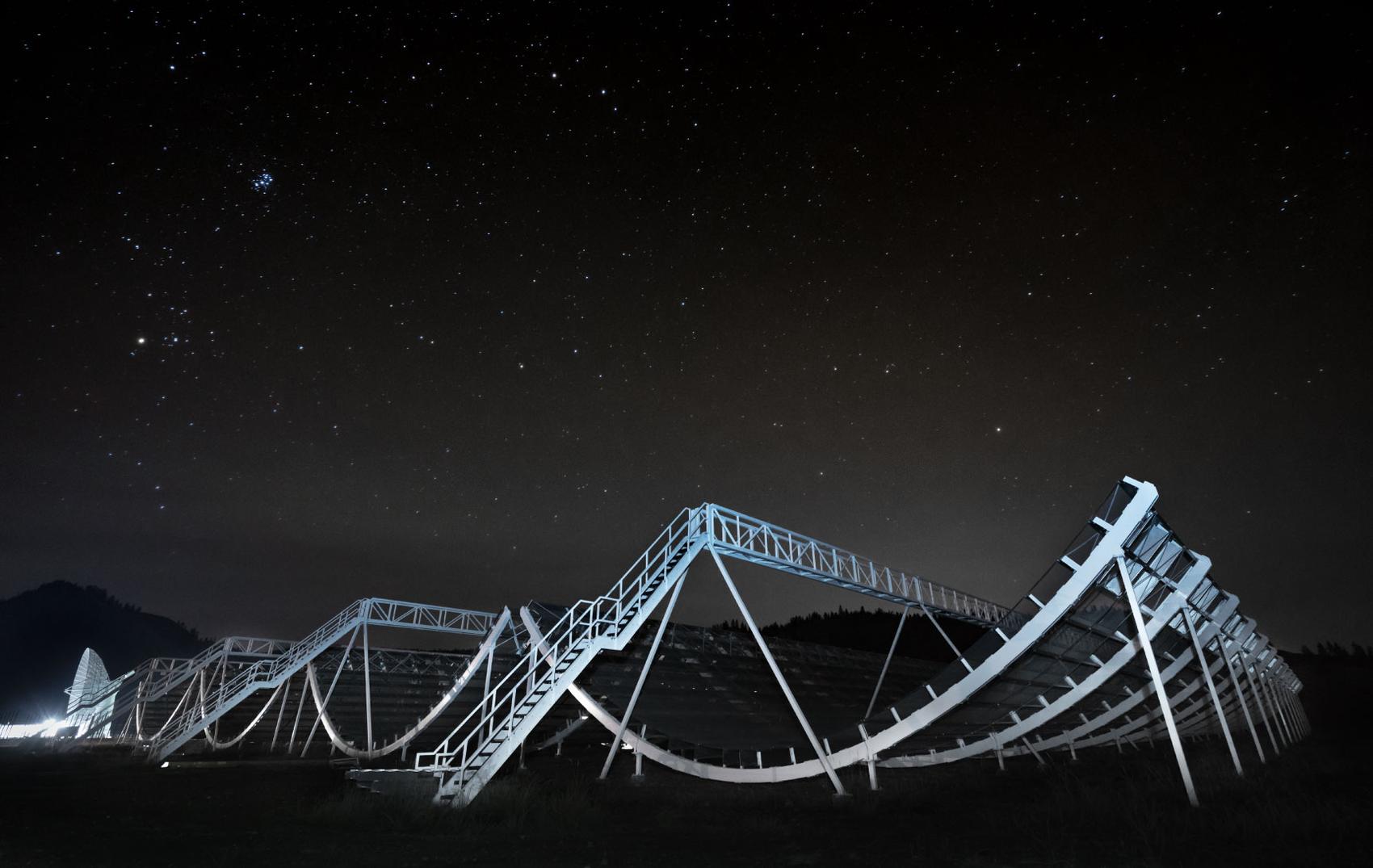Why questioning the universe matters to life on Earth
By Carolyn Ali

Astrophysicists and astronomers focus on the big picture, but their attempts to answer the eternal questions have led to economically beneficial spin-offs, such as Wi-Fi
How did the universe begin? How will it end? These are the questions that drive people working in the field of cosmology — the study of the universe from the perspective of physics. While they may seem far removed from our day-to-day lives, UBC’s Dr. Gary Hinshaw has found that the pursuit of the big picture actually improves our world in unexpected ways.
The UBC professor of astronomy and astrophysics is part of a team working with a radio telescope in the Okanagan called CHIME (the Canadian Hydrogen Intensity Mapping Experiment). CHIME is designed to make the largest map of the universe ever attempted. The data from this map will allow his team to determine the expansion history of the universe and understand how dark energy is causing the expansion of the universe to speed up over time.
So how does that matter to life on Earth? We asked Dr. Hinshaw for a simple explanation.
Why is “dark energy” significant for life on Earth?
We know that roughly three-quarters of energy density in the universe is comprised of dark energy. It’s the dominant energy force in the universe and we know almost nothing about it, other than its affect on the expansion.
If we can figure that out, it could have dramatic implications for our understanding of basic physics. And the more we understand about physics, the more we can harness it for technological purposes.

For example, our understanding of quantum physics really crystallized at the beginning of the 20th century, and it’s led to essentially all modern-day electronics. Computers and transistors are all by-products of our understanding of quantum mechanics. That’s a pretty dramatic impact.
So perhaps if we understand more about dark energy, it could have a profound impact on the late 21st or 22nd century — in ways we can’t even fathom yet.
Nature hides 96 per cent of all matter and energy in the universe in the form of dark matter and dark energy.
You mentioned that this kind of curiosity-driven research can have economically beneficial spin-offs. Can you give a few examples?
The person who originally developed Wi-Fi was a radio astronomer. Wi-Fi signals are transmitted with radio waves. He didn’t set out to develop Wi-Fi as an end in itself. Rather, it was a spin-off technology that he developed during his attempt to answer his scientific questions.
Another example is with one of our grad students, who developed a particular type of radio antennae that we use on CHIME. The frequency range we operate in is good for sensing water in the soil. Now, a start-up company in the Okanagan Valley is using these antennae to measure water in the soil as part of a micro-irrigation strategy to water crops. They put these antennae on big agricultural sprinkler heads and adjust water flow depending on soil moisture. Our program is having a direct spin-off in water-saving irrigation practices.
Cosmology research is driven by curiosity. In the course of doing research, you’re training smart, creative people who go on to be very inventive in many different ways. They may not all go on to do physics in astronomy, but they’ll pursue scientific applications or develop technology that improves the world in ways we can’t even think of right now.
CHIME is making the largest map of the universe ever created in order to understand dark energy, an energy force of unknown origins.
Learn how CHIME is working to help solve one of astronomy’s greatest mysteries
Carolyn Ali is a writer for UBC’s Brand and Marketing.
Feel free to republish the text of this article, but please follow our guidelines for attribution and seek any necessary permissions before doing so. Please note that images are not included in this blanket licence.


